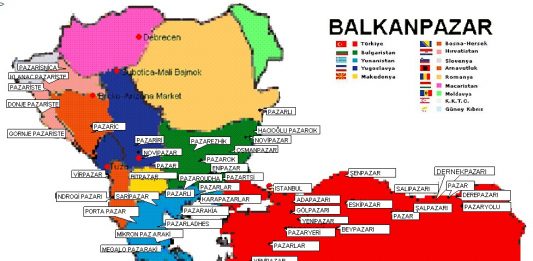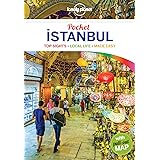“It has been seen in history that other nations in the world have formed unions and lived together for centuries. We want the union (union) we want to establish to be far above the unions (unions) in history.”
Mustafa Kemal Ataturk February 27, 1938
While countries are trying to come together by regionalization as a reaction to globalization, Turkey is in the center of the unions that are formed/may be formed in its region. The main center of the five regions in the Euro-Asian transition area is Turkey;
- Balkans
- Caucasia
- Middle East/North Africa
- Middle Asia
- Russia/Ukraine
Turkey is an internal union in which refugees from these regions make up 2/3 of its population, and these regions are united and fused. Turkey itself is a union; union of these regions. Each of these regions geographically extends into Turkey. The Balkans extend to Thrace, the Caucasus to the Eastern Black Sea, and the Middle East to the Southeast.
Before October 3, 2005
Today, the centers of attraction are not nation states; regional mergers. In foreign economic relations, Turkey, which opened to the Middle East countries in the 1980s, started to open up to the Black Sea and Caspian basin countries and the Balkans in the 1990s. The five vital areas in question have been partially covered by the BSEC and ECO;
- While signing Free Trade Agreements with Morocco, Tunisia, Palestine, Syria, Israel in the Former Yugoslavia countries (Slovenia, Bosnia, Croatia, Serbia, Macedonia), Hungary and the Middle East/North Africa, which are not included in the union initiatives,
- Work continues on starting FTA (Free Trade Agreement) negotiations with Algeria and concluding FTA negotiations with Lebanon and Jordan.
In these regions, with the founding initiative of Turkey;
- BSEC Black Sea Economic Cooperation, covering the Balkans, Caucasus and Russia/Ukraine regions,
- ECO-EKIT Economic Cooperation Organization associations covering the Caucasus, Middle East and Central Asia regions have been pushed into the background due to the EU passion.
Unity Movements in the Continents of Europe-America
Europe and America are one union. While the US continent was established in the form of the United States, regional cooperation was expanded to Canada and Mexico with NAFTA (North America Free Trade Agreement). The European continent is also developing and expanding as the European Union. The Western World, which creates areas of unity for itself, is swallowing the pieces while following the strategy of disintegrating the states in the East (Yugoslavia, Iraq). While Germany was uniting, Yugoslavia was disintegrated and the parts started to be taken into the Union one by one. After Slovenia’s accession, negotiations are continuing with Croatia, Macedonia and Serbia-Montenegro. The EU, which remained a spectator to the bloody disintegration in its backyard 10 years ago, is drawing its geographical borders from the inside. A meaningful date is also mentioned to join the Balkans to the EU:The 100th anniversary of the 1st World War, the beginning of which was the assassination in Sarajevo, i.e. 2014. Italian Deputy Prime Minister and Minister of Foreign Affairs Massimo D’Alema, in the context of the enlargement process of the European Union (EU), the Balkan countries (meaning the Former Yugoslavia-Western Balkans). countries) say that they see Turkey in a higher priority position compared to its membership.
Unity Movements in the Euro-Asian Transition Area (Eurasia)
On the other hand, unity movements in the Euro-Asian transition area (Eurasia) and Far Asia are not yet functional. The Free Trade Agreement signed between Korea and the Association of Southeast Asian Nations (ASEAN) on May 17, which will cover a population of 548 million in ten countries, is the first concrete step in this regard.
With the same point of view in the definition of the strategic region, which is called “Greater China” with the strategies developed by the USA in the 1990s and includes China, Hong Kong and Taiwan, this time, since the early 2000s, this time covering the Middle East and North Africa regions of the Europe-Asia transition area. The center began to be defined as the “Greater Middle East”. The other four regions in the transition area are the surrounding areas of this region. With the BOP, the Europe-Asia transition area will be designed by non-regional powers with the understanding of the “Greater Middle East Union”.
After October 3, 2005
Just as the UK established the EFTA (European Free Trade Association) after it was not accepted to the EC in 1973, Turkey also turned to the BSEC project in the early 1990s, although not very clearly, after the response from the EC. Thus, Turkey was able to initiate a regional integration movement on its own initiative, and now, after the uncertainty created on October 3, 2005 ;
- BFTA (Balkan Free Trade Agreement) union formation should be initiated with Macedonia, Croatia, Slovenia, Bosnia and Herzegovina, the former Yugoslavia countries that were not agreed with the BSEC in the Western Balkans.
- Syria, Israel, Jordan, Palestine, Egypt, TRNC, on the eastern flank of the Mediterranean; MFTA (Mediterranean Free Trade Agreement) should be formed with Morocco, Tunisia, Algeria, the Arabian Peninsula countries in the Red Sea (Saudi Arabia, gulf countries).
- The BSEC unity movement in the Black Sea basin should be brought dynamism again.
- ECO unity movements in the Caspian basin should be brought dynamism again.
- Turkey, which is the center of the Five Seas (Aegean, Mediterranean, Persian Gulf, Caspian, Black Sea) region, has taken the initiative to create a “unity” through common markets, free trade zones, customs unions, border trade agreements, cultural associations in five regions that are both neighbors and relatives. should undertake the leadership of the “Movement of the People” and identify this initiative as the “Great Ideal”. The adjective “big” here is not the ideal of gaining land, as in Greece’s “Megalo Idea”, or the overt or indirect occupation of the countries of the region, as in the USA’s BOP “Greater Middle East Project”, but the “development of culture, economy and politics” of the countries in the region. It is about the ideal of “unity”. This unity is also the guarantee of “Peace at home, peace in the world”.






















